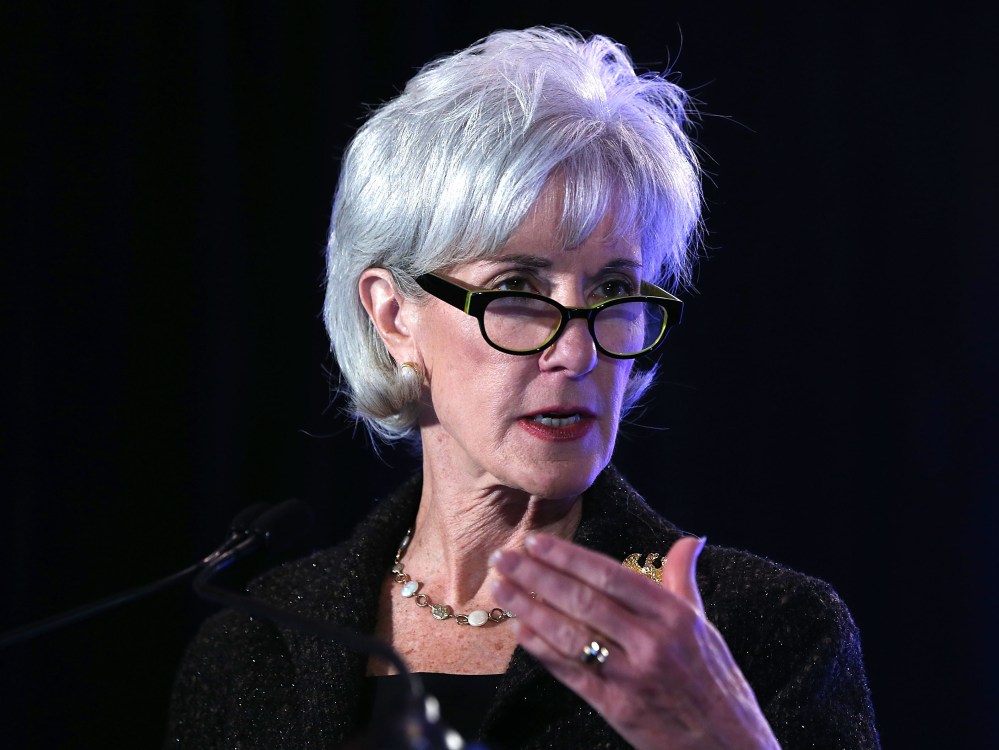Health and Human Services Secretary Kathleen Sebelius heads to Capitol Hill Wednesday—and Republicans are drooling.
House Republicans had been calling for Barack Obama to boot Sebelius even before the health care law’s website turned out to be a disaster and before news broke that millions of Americans won’t get to keep their plans.
Her performance in front of the House Energy and Commerce Committee will need to be top-flight to withstand the pressure coming from both parties. She’s sure to be asked tough questions about the website, Americans being forced to buy better health care plans and what the administration knew about both. Some will be fair and some will be for show.
Here are the biggest questions she’s sure to face, where they come from and what she’ll need to say to survive:
Q: One the website: What did you know, and when did you know it?
A: It’s still unclear how much Sebelius knew about potential problems with healthcare.gov in advance of the website’s launch. She admitted last week that more time for testing would have happened in an ideal world, but that “we did not have the luxury of that.” But it still isn’t clear whether she and other top agency officials suspected there were any problems ahead of time or whether they ignored red flags earlier in the process. (One contractor, QSSI, testified that it had notified government officials before launch of problems with its portion of the site.) Sebelius has already said that Obama was not told about any problems ahead of time.
Sebelius will have to walk a fine line in denying that she knew there were problems, but also defend her leadership as adequate.
Q: So who’s to blame for this website, then?
At the first Obamacare hearing in Congress post-rollout, federal contractors blamed the Centers for Medicare and Medicaid Services (CMS), which was responsible for overseeing the website’s development and launch. Lawmakers forced the contractors to cough up a few names of CMS officials, but no one seemed to know exactly who was in charge of making the executive-level decisions about the website’s development, testing, and launch.
CMS already seems prepared to take the fall, saying on Monday that it was “taking full responsibility” for the website’s problems. But both Republicans and Democrats have demanded that individuals be held accountable for the failings, and many won’t be satisfieduntil heads roll.
If Sebelius decides to point fingers, she’ll have to do it in a way that doesn’t just look self-interested. If she names names, Congress will demand details.
Q: How do we know the website will be fixed by next month, as you claim?
If Sebelius didn’t see problems the first time around, why should Congress trust her now? She’ll have to have a convincing answer, filled with the kind of specifics that are going to satisfy anyone following the fiasco closely.
The Obama administration didn’t do itself any favors with its initial reluctance to disclose exactly who is working to fix the site and what they’re doing to fix it. We now know that QSSI, one of the private contractors, is helming the process, working with top Obama aide Jeffrey Zients. Daily press calls with CMS are meant to keep the public posted on the progress being made, but given the earlier troubles, there’s still a lot of skepticism about whether the job will get done on time, and whether the remedy all that ails the law.
And the White House is already cutting it close with the late November deadline: Millions of Americans whose plans are being dropped in 2014 because of new regulations will need to sign up for new insurance by December 15 if they want to avoid a coverage gap beginning January 1, 2014. It’s unclear whether the White House has a contingency plan if there are still serious problems with the website come December.
Q: Obama told the public that if you like your insurance you can keep it. But hundreds of thousands of Americans are going to lose their insurance because of Obamacare. Was Obama lying? Or did he just not know?
A: This is the latest controversy to flare up—and the confusion is understandable. The cancelled plans are a feature of Obamacare, not a bug, so Obama never should have promised that everyone would get to keep his or her insurance—at least without adding a lot of qualifying statements.
Administration officials have tried to push back by saying it’s the insurers who are deciding to cancel these plans. But the reason these plans are going away is because they don’t meet Obamacare’s new standards for individual and small group health coverage, which require essential benefits like prenatal and drug coverage. Obamacare’s insurance exchanges are meant to provide these Americans with viable alternatives to their cancelled coverage, giving them subsidies if they are under 400 percent of the poverty line (annual income under $43,320 for individuals).
But this leaves Sebelius in a vulnerable position. If the White House was willing to make such a mistatement over and over, why should they be trusted now? Sebelius will again need to lean on specifics and not generalities to survive this question.
Q: Shouldn’t we consider delaying the individual mandate, given the problems the site facing?
A: It’s the single biggest question that Republicans have been pushing since the website’s troubles have begun, joined by a handful of moderate Democrats like Sen. Joe Manchin, and they’ll certaintly try to put Sebelius on the defensive.
Starting in January 2014, those who fail to have insurance for three consecutive months—lacking coverage for at least one day in each of those months—will pay a penalty when they file their 2014 tax returns. While the individual mandate officially takes effect on January 1, 2014, people will have until March 31 to sign up for insurance coverage without penalty—a grace period that the White House clarified last week.











